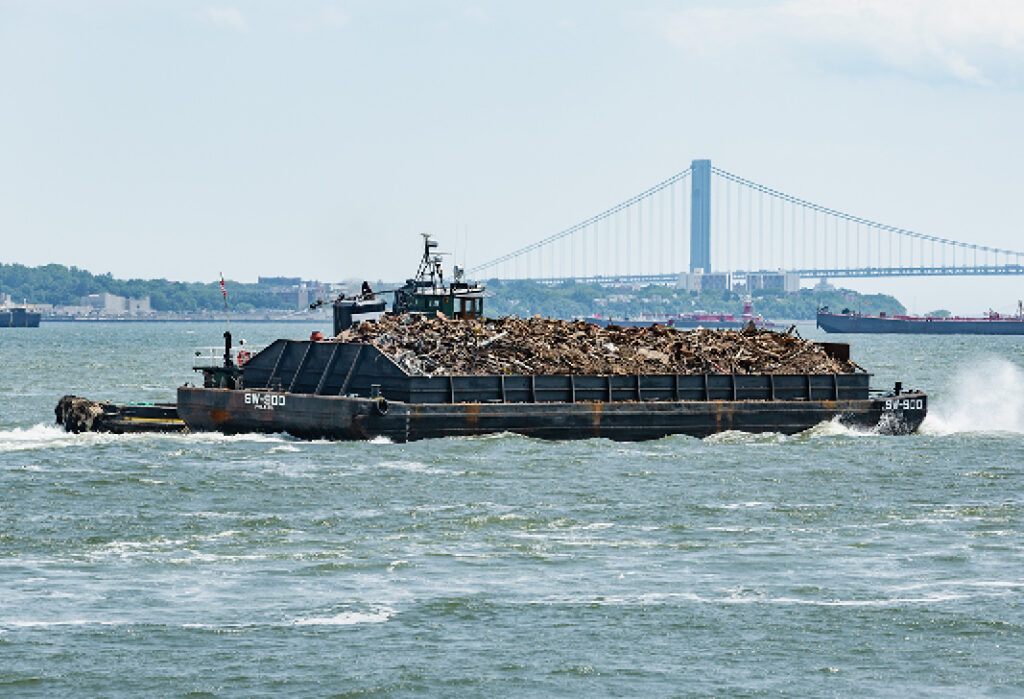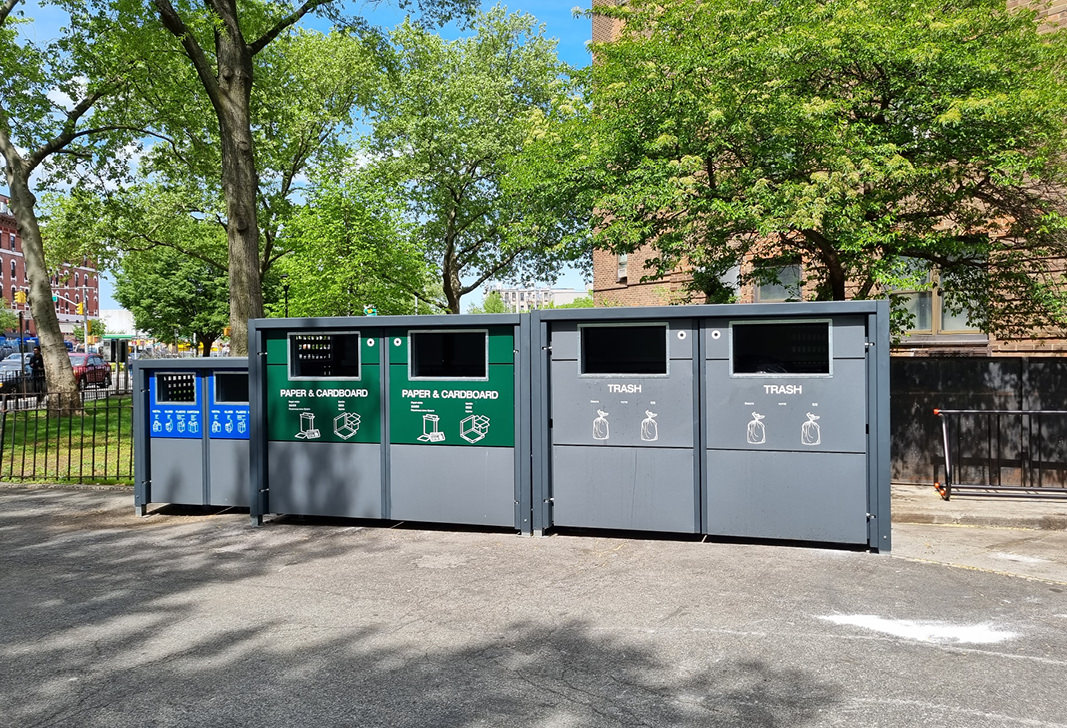

The rising cost of landfill in the US
Across the United States, landfill disposal costs are rising. Even the very first landfills made the majority of their revenue via tipping fees; fees charged to trucks that are dropping off their garbage based on their weight per ton. The national average tipping fee has increased by almost 133% in 35 years. Even with inflation considered, the increase is still alarming.
The Environmental Research & Education Foundation’s (EREF) 2024 report, provides a detailed look at national trends and regional variation in waste tipping fees across the United States.
While the national average landfill tipping fee actually saw a modest decline in 2023, the overall decrease, just 3%, barely moves the needle. This slight dip masks a far more serious issue; the stark regional disparities in fees. Some area landfill fees remain largely unchanged since the 1990s, while others have spiked enormously in recent years.
The report notes that the Northeast saw a sharp increase, climbing to a staggering $84.44 per ton, the highest rate in history, while other regions experienced minor reductions, with some still hovering well above the national average. Read the full report here.
High population density = high waste tonnage. Landfill tipping fees tend to be significantly higher in densely populated coastal or lakeside areas of the US, particularly in the Northeast and parts of the Pacific region. This is primarily due to limited land availability, higher waste generation and stricter environmental and zoning regulations. In cities like New York and Boston, the high volume of urban waste means landfill space is consumed more quickly, driving up operational costs and reducing the lifespan of existing sites.
With land in these areas often prioritised for housing or green space, new landfill development is both politically and economically difficult, pushing facilities farther from city centres and adding transport costs. Coastal or lake cities lose one
“Tipping fees are always higher near larger population centers,” explains Ed Repa of the National Solid Wastes Management Association, with fees tending to rise on both coasts where population pressures are greatest and land that is available is reduced by the waterfront.
Coastal and lake locations also face heightened regulatory scrutiny to protect surrounding water systems, further increasing the cost of compliance. In some states like Washington, fees are additionally inflated by the long-term costs of monitoring and managing legacy landfills. With limited local disposal options and few nearby alternatives, landfill operators in these regions often have more pricing power, further contributing to elevated tipping fees.
These variations aren’t just statistical quirks, they have real consequences, disproportionately affecting communities and waste management systems in high-cost areas. These discrepancies by region result in a huge difference in service, access and recycling rates across the U.S. which then leads to out-of-state dumping with some waste shipped hundreds of miles to ‘cheaper’ landfill sites. Clearly, the uneven landscape of tipping fees is a growing problem that can’t be ignored.
The hierarchy for waste, also known as Municipal Solid Waste (MSW), means that highest priority in reducing waste and associated waste cost, is reducing the amount of waste created in the first place. Secondly comes reusing wherever possible, with landfill being the very last resort. Therefore, the biggest factor controlling the cost of landfill, is how well the pre-landfill steps are accomplished.
The 2024 State of Recycling report, shows that recycling rates, even in leading states, rarely exceed 30% of waste recovery, meaning some 70% or more ends up in a landfill. Thus, the demand for landfills continues to rise in certain areas.
Experts point to supply and demand as a primary driver of tipping fee increases. Landfill rates rise as capacity diminishes. In states like Massachusetts, where landfill closures have reduced available space, tipping fees have surged from the low $40s to nearly $70 per ton in just five years. Some projections estimate they could reach $100 per ton within the next five years. What’s more, increasing bans on importing waste to other nations, adds to supply and demand pressure here in the U.S.

Constructing and operating a landfill requires significant investment and as such, private companies have replaced many municipal governments, owning and operating the majority of landfills across the U.S.
Debra Reinhart, a member of the Board of Scientific Counselors for the Environmental Protection Agency explained, “… the trend has been to go larger and larger so the small neighborhood dump can’t exist because of the regulations and the sophistication of the design. We are tending to see large landfills, which require a lot of investment upfront.” As municipal governments increasingly rely on private companies to manage waste disposal and these larger sites, costs are passed down to consumers.
Research also shows that fees at privately owned facilities are rising far more quickly than at publicly owned facilities. Private facilities have raised prices 23% since 2017, compared to a 4.7% rise at publicly owned facilities.
A national truck driver shortage and rising fuel prices have made it more expensive to transport waste. In regions where waste must be hauled over long distances due to limited landfill space, these costs add to overall disposal expenses and also equate to highly unsustainable practice. For example, the Capitol Region Council of Governments (CRCOG) report, highlights a significant rise in CT landfill fees, driven largely by the 2022 closure of Connecticut’s Hartford waste-to-energy facility. This reduction in in-state disposal capacity has forced many municipalities to rely on out-of-state landfills in states like Pennsylvania and Ohio, increasing both transport and processing costs.
Up until 2018, China was importing MSW from the U.S. and other large waste producers. However, the Chinese ban on imported recyclables in 2018 disrupted global recycling markets, with countries like the United States, who had previously been exporting around 4,000 shipping containers of recycling to China every day, rerouting most of their shipments to Southeast-Asian nations such as Thailand, Vietnam and Malaysia. These countries, some of which already lacked the infrastructure to manage their own waste adequately, were unprepared to take in such large amounts of recycling. More import markets stopped accepting waste and exporting nations around the world began to accumulate massive quantities. Of course, some waste was directed back to U.S. landfills, resulting in a sudden impact on the supply and demand for landfill space, previously discussed.
In some states, as mentioned, lower landfill costs make them a cheap dumping ground, literally, for out-of-state garbage. For example, Ohio, when compared to the East Cost, has fairly low landfill fees and because of this, waste from out of state has been sent to Ohio for years, upsetting local residents. In fact, much of the waste and debris from the 9/11 attack in New York City, is buried in Ohio landfill, some 530 miles away.

By way of deterrent for this out-of-state dumping, lawmakers want to raise Ohio’s landfill fee from $4.75 to $8.50 per ton, a 79% increase. U.S. laws on interstate commerce mean that Ohio cannot charge different rates for in and out-of-state waste. Therefore, the only legal way to make Ohio less attractive for outside garbage, is to raise the price for everyone, including local residents.
If this happens, Ohio residents will see higher trash disposal costs, around $56 million in total. Ohio’s state tipping fees haven’t increased in years, so while the 79% increase sounds alarming, supporters would argue that it is a necessary hike in solving the problem.
This growing financial pressure that re-routing waste has, underscores the urgency for local and regional solutions to reduce waste volumes in the first place; thus reducing reliance on external disposal.
St. Lucie County, Florida, is among the latest to announce plans for a significant rate hike, reflecting a national trend driven by supply and demand, infrastructure costs and regional waste policies.
St. Lucie County officials are considering increasing landfill disposal rates from $49 per ton to $69 per ton in October, it is reported. This 40% hike will likely be passed on to residents, potentially raising annual garbage pickup fees by $84. The county’s landfill has operated at a deficit for years, with tipping fees unchanged, despite rising fuel and equipment costs. The expansion of landfill capacity to accommodate population growth has further added to financial pressures.
St. Lucie’s situation is not unique as across the country, fluctuating landfill tipping fees rates vary radically by region and state.

The steady rise in tipping fees makes landfills less economically viable over time, thus accelerating the shift toward alternative waste management strategies. For U.S. municipalities and residents, the fees associated with waste disposal are likely to continue growing and it is hoped that the rising taxes on landfill are used to fund more sustainable waste diversion infrastructure.
In Colorado, the Summit Board of County Commissioners recently approved significant increases to tipping fees at the Summit County Resource Allocation Park (SCRAP) in Breckenridge. From June, commercial compacted municipal solid waste will see fees rise from $58 to $69 per ton, with construction and demolition debris increasing from $72 to $85 per ton. The changes also include a rise in biosolid disposal from $33 to $40 per ton. According to the county’s Solid Waste Director, the fee hike reflects the need to move toward a more sustainable model and will support investment in improved waste management systems.
The CRCOG report notes that investing in expanded food waste diversion, composting and other sustainable waste management practices will be key in addressing the current financial pressures surrounding our waste practices across the country. As landfill space becomes scarcer and operational costs climb, waste reduction efforts, improved recycling systems and investment in sustainable waste solutions are becoming increasingly necessary.
Research shows that there is strong international precedent for using landfill taxes to drive more sustainable outcomes. Countries such as the UK and Ireland, neither of which had a landfill tax in 1995, have since introduced some of the highest landfill levies in Europe. The result has been a dramatic shift in waste disposal habits; the UK has reduced landfilling by 80% and Ireland by around 70%, with both countries seeing far higher recycling rates as a direct outcome of these policies.

The Recycling Partnership’s report on recycling in the U.S. states that only 43% of all U.S. households participate in recycling and we know recycling access is a huge barrier to this figure improving. Multifamily communities are among the most underserved in the U.S. with only 37% of multifamily homes accessing a recycling program to divert waste from costly landfill.
Dedicated drop-off points and recycling collection stations offer an effective, alternative solution to curbside recycling and directly address this issue. We are finding that many communities are now starting to install clean, safe and efficient recycling units in an effort to divert as much waste as possible from expensive landfill sites. metroSTOR’s extensive range of recycling infrastructure is designed from the ground up to make it as easy for people to recycle correctly as it is for them to dispose of trash. Vitally, units can be installed in drop-off locations where on-site space is not available.
Find out about the communities who are diverting waste from landfill this way and the flexible range of products available.